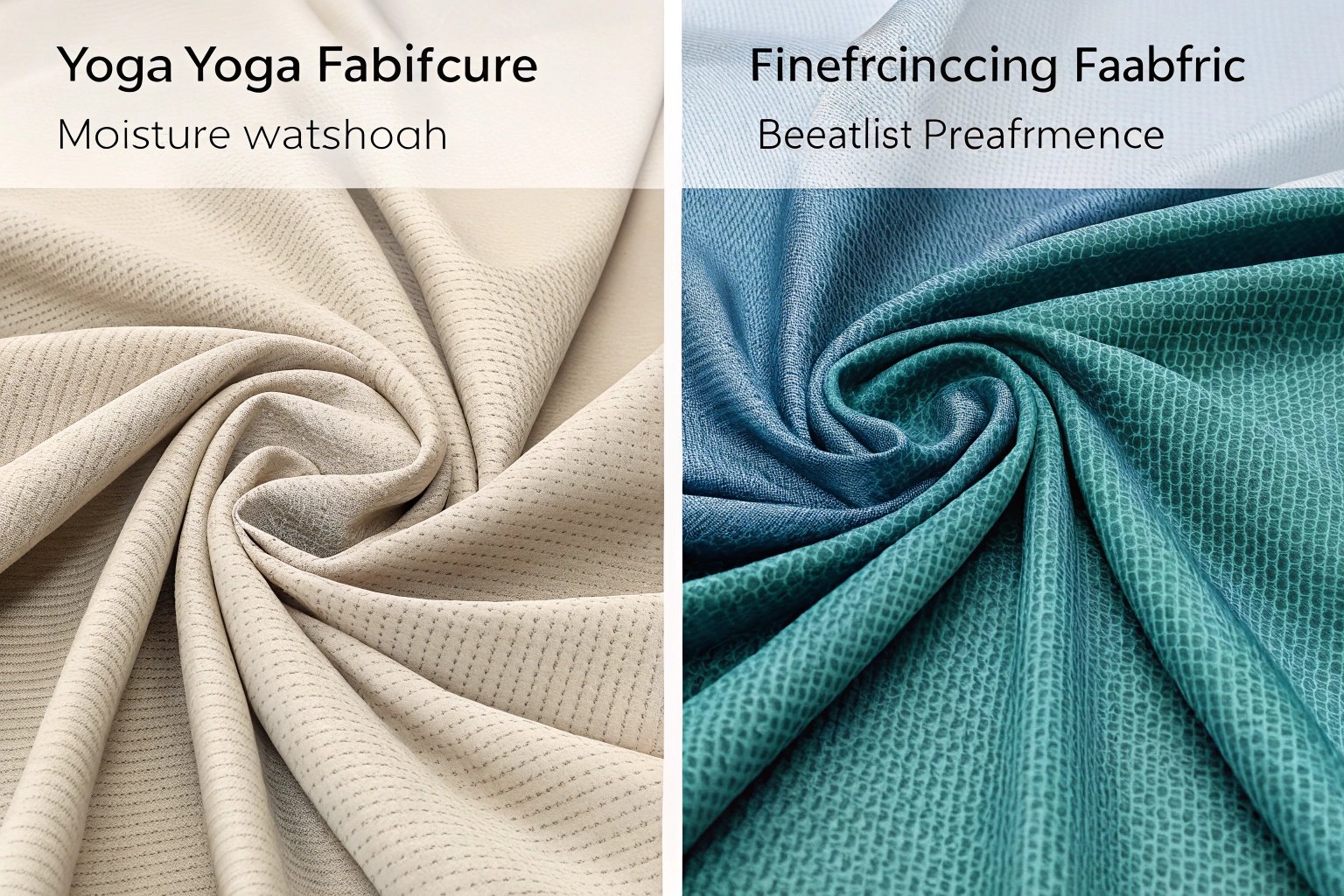Moisture-wicking fabrics pull sweat away from your skin, while breathable fabrics let air flow freely to keep your body cool. They solve different problems but often work best together.

Choosing yoga clothes isn’t just about style—it’s about how the fabric behaves under pressure. Whether you’re flowing through vinyasas or holding a deep lunge, what touches your skin matters. Understanding the difference between moisture-wicking and breathable fabrics helps you stay dry, cool, and focused on your practice.
What does "moisture-wicking" actually mean?
Moisture-wicking isn’t just a buzzword—it’s a technical process that helps you stay dry.
Moisture-wicking fabrics draw sweat away from the skin and spread it across the surface of the fabric so it can evaporate faster.
Imagine doing yoga in a cotton shirt. It absorbs sweat and stays wet, making you feel heavy and cold. Moisture-wicking fabrics, like polyester or nylon blends, do the opposite. They lift sweat off your skin and move it to the fabric’s outer layer. From there, it evaporates. This helps regulate your body temperature and prevents skin irritation. It’s perfect for hot yoga or high-intensity flows. Brands often combine spandex with polyester for stretch and moisture control.
| Fabric Type | Wicking Ability | Best For |
|---|---|---|
| Polyester-Spandex | Excellent | Hot yoga, HIIT yoga |
| Nylon | Very Good | Power yoga, cross-training |
| Cotton | Poor | Avoid for high-sweat sessions |
What makes a fabric "breathable"?
Breathable fabrics allow heat and air to pass through, preventing overheating and keeping your body cool during physical activity.
Breathable fabrics don’t trap heat. They let your skin breathe. In a steamy yoga studio or outdoor summer session, this makes a big difference. Materials like bamboo blends and lightweight mesh panels help release heat. Breathability is measured by how quickly air passes through a fabric, not how well it dries sweat. That’s why some breathable fabrics might still feel damp—they release heat but don’t move moisture quickly. In many cases, brands combine breathable mesh panels with a moisture-wicking base for the best of both worlds.
| Fabric Type | Breathability Rating | Use Case |
|---|---|---|
| Bamboo | High | Gentle yoga, daily wear |
| Polyester Mesh | Excellent | Hot yoga, layered designs |
| Lycra | Moderate | Needs added venting |
Which is more important for yoga: moisture-wicking or breathability?
Moisture-wicking keeps you dry. Breathability keeps you cool. The best yoga fabric combines both, adjusting for intensity and environment.
If you do hot yoga or high-sweat vinyasa flows, prioritize moisture-wicking to avoid soggy leggings. If you’re practicing restorative yoga or in warm outdoor settings, breathability might be more important. Ideally, you want a fabric that does both. Many performance fabrics are engineered to wick moisture and breathe. Read the label or product description closely—some leggings add mesh panels in heat zones to boost airflow without sacrificing moisture control.
| Practice Type | Key Fabric Feature | Recommended Fabric Blend |
|---|---|---|
| Hot Yoga | Moisture-Wicking | Polyester-Spandex |
| Outdoor Summer Flow | Breathable | Bamboo-Polyester |
| Power Yoga | Both | Nylon-Spandex with Mesh Panels |
How can you test if your yoga leggings wick moisture or breathe?
To test moisture-wicking, place a water drop on the inside of the fabric and see how fast it spreads. For breathability, hold it to your mouth and try blowing air through.
For moisture-wicking: Place a small drop of water on the inner surface of the fabric. Good fabrics spread the drop quickly and draw it to the outer layer. Bad fabrics absorb it or leave it sitting. For breathability: Hold the fabric over your mouth and blow. If you can easily feel air pass through, it’s breathable. If it’s blocked or thick, it isn’t. Combining these tests gives you a clearer sense of what leggings will feel like in a real class.
| Fabric Test | What to Expect | What It Tells You |
|---|---|---|
| Water Drop Test | Spreads fast = good wicking | Controls sweat effectively |
| Breath Test | Airflow = good breathability | Helps with heat regulation |
What materials offer both moisture-wicking and breathability?
Blends like polyester-spandex or nylon-mesh offer a mix of moisture-wicking and breathability, making them ideal for dynamic yoga sessions.
Modern activewear materials are designed to solve multiple problems at once. A polyester-spandex blend wicks sweat and stretches with your body. Add mesh panels, and you get ventilation too. Bamboo-poly blends are also rising in popularity—they’re breathable, soft, and antimicrobial, although less stretchy. Read tags and brand tech specs. If a pair of leggings boasts four-way stretch, moisture-wicking, and airflow zones, it’s likely built for performance.
| Material Blend | Moisture-Wicking | Breathable | Stretch | Best For |
|---|---|---|---|---|
| Polyester-Spandex | Yes | Moderate | High | Hot yoga, HIIT |
| Nylon-Mesh Combo | Yes | High | High | Power yoga, circuit training |
| Bamboo-Polyester | Moderate | High | Moderate | Gentle yoga, lifestyle wear |
Conclusion
Moisture-wicking and breathability are not the same—but both are essential for yoga wear that performs. One keeps you dry. The other keeps you cool. The best yoga fabrics balance both features through smart blends and thoughtful design. Understanding this difference helps you shop smarter, feel better, and practice without distraction.

